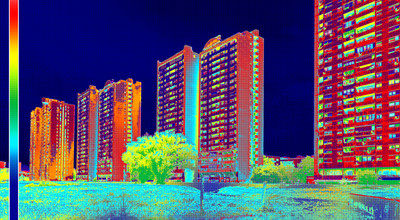Written by Anita Derjanecz, Managing Director of REHVA
With the ongoing revision of the EPBD and other EU directives dealing with energy efficiency and sustainability of buildings as part of the Renovation wave and the Fit for 55 package, it’s important to look at how the changing regulatory environment can contribute to making our built environment healthy and sustainable at the same time.
Why building energy performance policies should tackle indoor environment quality (IEQ)
Good indoor environmental quality (IEQ) has a pivotal role in people’s health, productivity, and wellbeing. According to a recent policy paper of BPIE, around 2.2 million Europeans suffer from asthma due to unhealthy living conditions, while 110 million people live in buildings with high concentrations of hazardous pollutants due to inadequate ventilation. Buildings with good indoor environment quality level on the other hand contribute to the health and productivity of building users and increase their work or learning performance. The importance and the non-energy related benefits of high IEQ and comfort in buildings are analysed by several studies and has been advocated by REHVA along many EU stakeholders for decades.
Buildings should provide healthy indoor environments and deep energy renovation shall improve IEQ (instead of deteriorating it due to mould building, overheating and decreased ventilation levels, as reportedly happens in many cases). To achieve this, more attention shall be paid to policy measures and regulatory instruments to ensure that deep energy renovation investments deliver healthy buildings with good IEQ levels. IEQ has 4 main aspects: indoor air quality, thermal comfort, lightning, and acoustic comfort, which aspects very much depend on the features of technical building systems (ventilation, heating, cooling, solar shading, etc.), which are in the scope of the EPBD. No wonder that the integration of IEQ criteria and policy measures in the EPBD was raised as a recurring demand and discussion point during the five stakeholder meetings organised about the EPBD revision by the European Commission in the past months.
How the EPBD and national policies can better tackle IEQ
IEQ related aspects should be integrated in the revised EPBD, which is the only legislation that tackles energy efficiency of technical building systems and IEQ in buildings. The previous EPBD already mandated the development of important EN standards, especially EN/ISO EN 16798–1 on Indoor environmental input parameters for design and assessment of energy performance of buildings addressing indoor air quality, thermal environment, lighting, and acoustics. However, IEQ and health aspects can be better addressed in the EPBD under revision and should be tackled by EU and MS level policy measures linked to the Fit for 55 package and the Renovation wave.
- EPCs should contain an IEQ indicator according toEN/ISO EN 16798–1 standard and a certificate of ventilation system performance. Several EU projects developed rating schemes and labels that can be integrated in the EPC framework and in other building certification schemes. A good example is the ALDREN‑TAIL index to rate the IEQ of buildings undergoing deep energy renovation.
- Long-term renovation strategies should consider meaningful measures promoting IEQ and to ensure that deep energy renovation delivers healthy indoor climate. A guidance document published by the European Commission could support national policy makers. An excellent list of possible measures to promote IEQ in LTRS is provided in the policy briefing of BPIE.
- Mandatory minimum energy performance standards for different building categories should consider IEQ and ventilation criteria ensuring indoor climate improvement by energy renovation. Ventilation criteria should be defined also for residential buildings where IAQ is reportedly often deteriorated by energy renovation.
- A future deep renovation standard in the context of financing should contain technical performance requirements related also to IEQ performance along energy performance as a prerequisite of finance. National grant schemes that combine performance based and descriptive requirements for energy and ventilation have demonstrated major energy and IEQ performance improvements. Such existing models, like the Estonian Fund KredEx programme can be used in the preparation of a deep renovation standard conditions for financing.
- Ensuring high quality and compliance during the entire renovation and building life-cycle result in high-performing buildings. Well-designed and operated building systems are energy efficient and provide healthy indoor environments at the same time. Independent technical monitoring and assistance should be mandatory and eligible part of public renovation programmes, while digital monitoring or regular inspection and maintenance of HVAC systems should ensure operational performance and adequate indoor climate quality levels.
See more details in REHVA’s feedback to the EPBD impact assessment consultation.
Other means to promote healthy buildings
Beside policy makers, every stakeholder and citizen have a role to play in promoting and demanding for healthy buildings. The COVID-19 pandemic taught us the hard way the importance of indoor environmental quality and how adequate ventilation can protect our health. It locked massive part of the global population in their homes for more than a year and has changed how citizens and governments value IEQ and indoor air quality. WHO published a roadmap to improve and ensure good ventilation in the context of COVID-19.
This crisis will probably result in a paradigm shift and accelerate the transition to healthy buildings that provide occupants with good IEQ and support their wellbeing. Building professionals, engineers, architects play a crucial role in delivering energy efficient and healthy buildings for a decarbonised built environment. To promote the transition and challenge professionals, REHVA launched a brand-new Healthy homes design competition 2022 for interdisciplinary teams of students or young professionals to design a multiapartment building in a modern urban environment with focus on people’s health and indoor climate solutions in their living environments and at the same time balancing energy use. The finalist will be invited to the CLIMA2022 the 14th REHVA World HVAC Congress in Rotterdam, that has Health and Comfort as one of its 5 main themes. Attractive prices in the 2 categories will be awarded at the congress. The pre-registration to the competition is still open!
This post was initially published on the Euractiv website.



